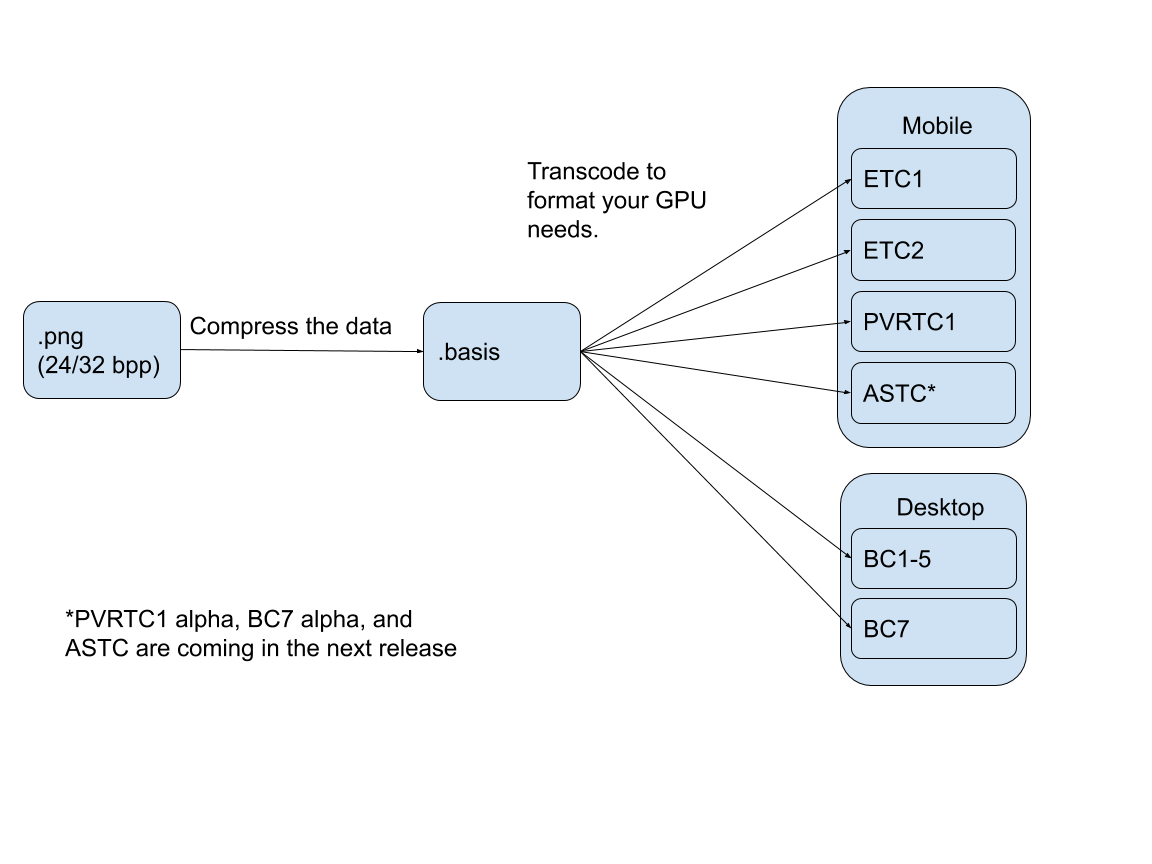The Basis Universal texture format is 6-8 times smaller than JPEG on the GPU, yet is a similar storage size as JPEG – making it a great alternative to current GPU compression methods that are inefficient and don’t operate cross platform – and provides a more performant alternative to JPEG/PNG. It creates compressed textures that work well in a variety of use cases - games, virtual & augmented reality, maps, photos, small-videos, and more!
Without a universal texture format, developers are left with 2 options:
- Use GPU formats and take the storage size hit.
- Use other formats that have reduced storage size but couldn't compete with the GPU performance.
Maintaining so many different GPU formats is a burden on the whole ecosystem, from GPU manufacturers to software developers to the end user who can’t get a great cross platform experience. We’re streamlining this with one solution that has built-in flexibility (like optional higher quality modes) but is much easier on everyone to improve and maintain.
How does it all work? Compress your image using the encoder, choosing the quality settings that make sense for your project (you can also submit multiple images for small videos or optimization purposes, just know they’ll share the same color palette). Insert the transcoder code before rendering, which will turn the intermediary format into the GPU format your computer can read. The image stays compressed throughout this process, even on your GPU! Instead of needing to decode and read the whole image, the GPU will read only the parts it needs. Enjoy the performance benefits!
 |
| Basis Universal can efficiently target the most common GPU formats |
 |
| Basis Universal reduces transmission size for texture while maintaining similar image quality. See full benchmarking results |
 |
| Basis Universal improves GPU memory usage over .jpeg and .png |
We look forward to seeing what people do with Basis Universal now that it's open sourced. Check out the code and demo on GitHub, let us know what you think, and how you plan to use it! Currently, Basis Universal transcoders are available in C++ and WebAssembly.
By Stephanie Hurlburt, Binomial and Jamieson Brettle, Chrome Media





